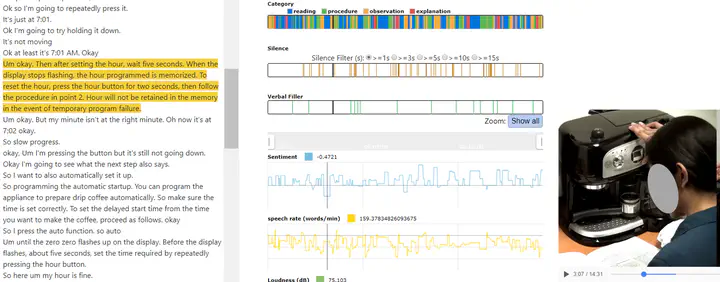Concurrent Think-Aloud Verbalizations and Usability Problems

Abstract
The concurrent think-aloud protocol—in which participants verbalize their thoughts when performing tasks - is a widely employed approach in usability testing. Despite its value, analyzing think-aloud sessions can be onerous because it often entails assessing all of a user’s verbalizations. This has motivated previous research on developing categories to segment verbalizations into manageable units of analysis. However, the way in which a category might relate to usability problems is currently unclear. In this research, we sought to address this gap in our understanding. We also studied how speech features might relate to usability problems. Through two studies, this research demonstrates that certain patterns of verbalizations are more telling of usability problems than others and that these patterns are robust to different types of test products (i.e., physical devices and digital systems), access to different types of information (i.e., video and audio modality), and the presence or absence of a visualization of verbalizations. The implication is that the verbalization and speech patterns can potentially reduce the time and effort required for analysis by enabling evaluators to focus more on the important aspects of a user’s verbalizations. The patterns could also potentially be used to inform the design of systems to automatically detect when in the recorded think-aloud sessions users experience problems.